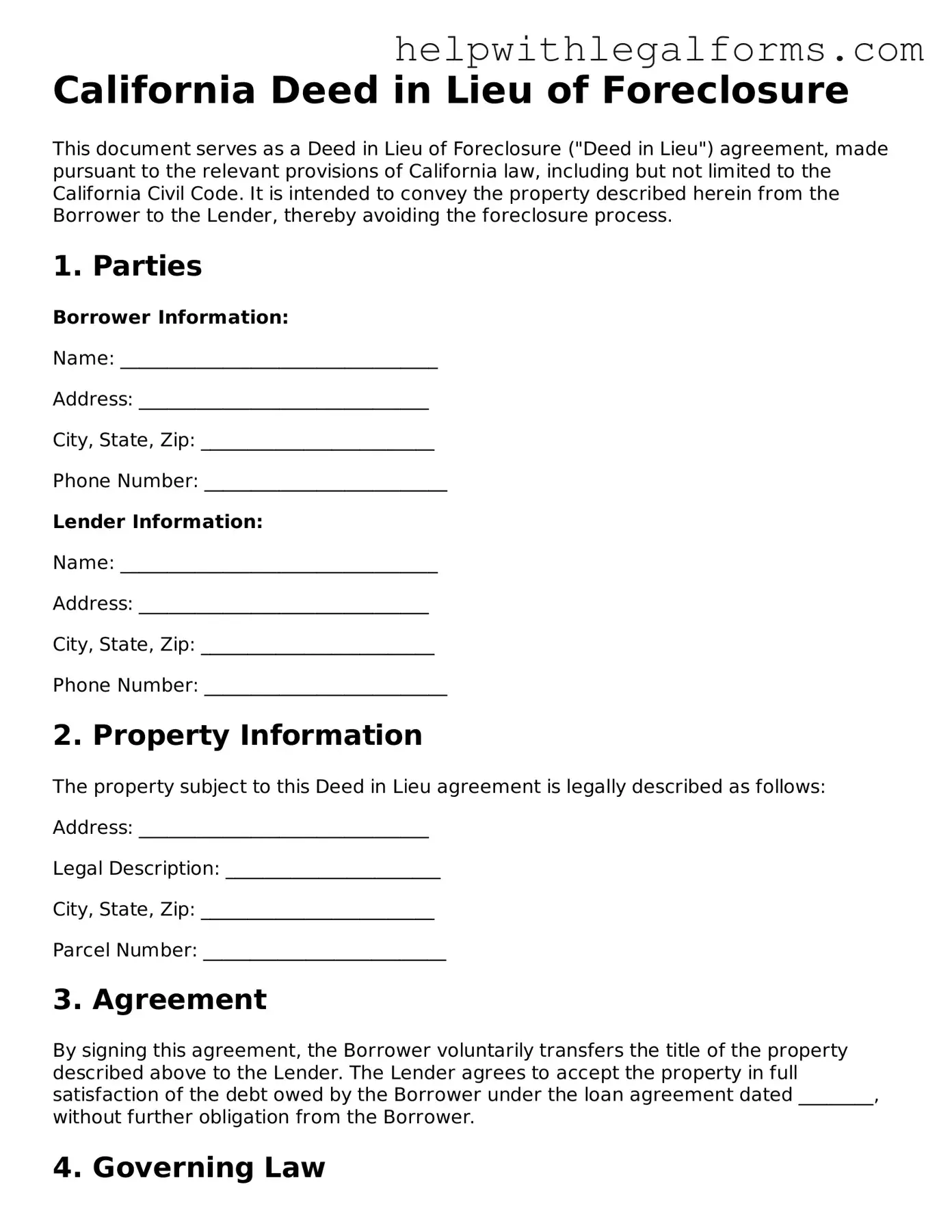California Deed in Lieu of Foreclosure
This document serves as a Deed in Lieu of Foreclosure ("Deed in Lieu") agreement, made pursuant to the relevant provisions of California law, including but not limited to the California Civil Code. It is intended to convey the property described herein from the Borrower to the Lender, thereby avoiding the foreclosure process.
1. Parties
Borrower Information:
Name: __________________________________
Address: _______________________________
City, State, Zip: _________________________
Phone Number: __________________________
Lender Information:
Name: __________________________________
Address: _______________________________
City, State, Zip: _________________________
Phone Number: __________________________
2. Property Information
The property subject to this Deed in Lieu agreement is legally described as follows:
Address: _______________________________
Legal Description: _______________________
City, State, Zip: _________________________
Parcel Number: __________________________
3. Agreement
By signing this agreement, the Borrower voluntarily transfers the title of the property described above to the Lender. The Lender agrees to accept the property in full satisfaction of the debt owed by the Borrower under the loan agreement dated ________, without further obligation from the Borrower.
4. Governing Law
This Deed in Lieu shall be governed by and construed in accordance with the laws of the State of California.
5. Signatures
The parties agree to this Deed in Lieu of Foreclosure as of the dates written below.
Borrower's Signature: ____________________________ Date: ________
Lender's Signature: ______________________________ Date: ________
6. Acknowledgment
This document was acknowledged before me on ________ by the following:
Name: __________________________________ (Borrower)
Name: __________________________________ (Lender)
Notary Public: ____________________________
Commission Number: ______________________
My commission expires on: ________________
